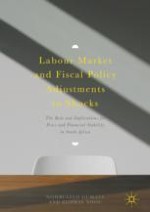2017 | OriginalPaper | Buchkapitel
38. Fiscal Policy Shocks and the Current Account
verfasst von : Nombulelo Gumata, Eliphas Ndou
Erschienen in: Labour Market and Fiscal Policy Adjustments to Shocks
Aktivieren Sie unsere intelligente Suche, um passende Fachinhalte oder Patente zu finden.
Wählen Sie Textabschnitte aus um mit Künstlicher Intelligenz passenden Patente zu finden. powered by
Markieren Sie Textabschnitte, um KI-gestützt weitere passende Inhalte zu finden. powered by
Abstract
-
This chapter examines the effects of expansionary fiscal policy shocks on the current account. We find that the current account deteriorates in response to an expansionary fiscal policy shock which increases the budget deficit. This evidence is consistent with the twin deficits hypothesis. Loose monetary policy also leads to current account deficits. But expansionary fiscal policy shocks tend to dominate loose monetary policy shock effects at the peak deterioration of the current account. However, we fail to find evidence that fiscal innovation shocks that raise government spending today are followed by a period of below trend spending at some point in the future. Hence, we conclude that evidence in this chapter rejects the spending reversals hypothesis.Furthermore, evidence shows that fiscal innovations crowd-in private consumption and investment and the REER appreciates. We find that expansionary government consumption shock contributed to the REER appreciation between 2009Q3 and 2010. This implies that part of the massive REER appreciation during the recession was due to the positive fiscal innovation shocks. Thus, we conclude that policy discussions that mostly focus on monetary policy as the main driver of the current account and therefore advocate for the use of monetary policy tools to deal with current account dynamics are omitting an important driver of the current account dynamics. Policy discussion should also include the influence of fiscal policy in driving the external imbalances. The effects of the policy rate to influence short-term demand can be neutralized by expansionary fiscal policy innovations, such that tightened monetary policy may achieve little in dampening aggregate demand and improving the current account. Hence there is a need for the coordination of the policy tools.
